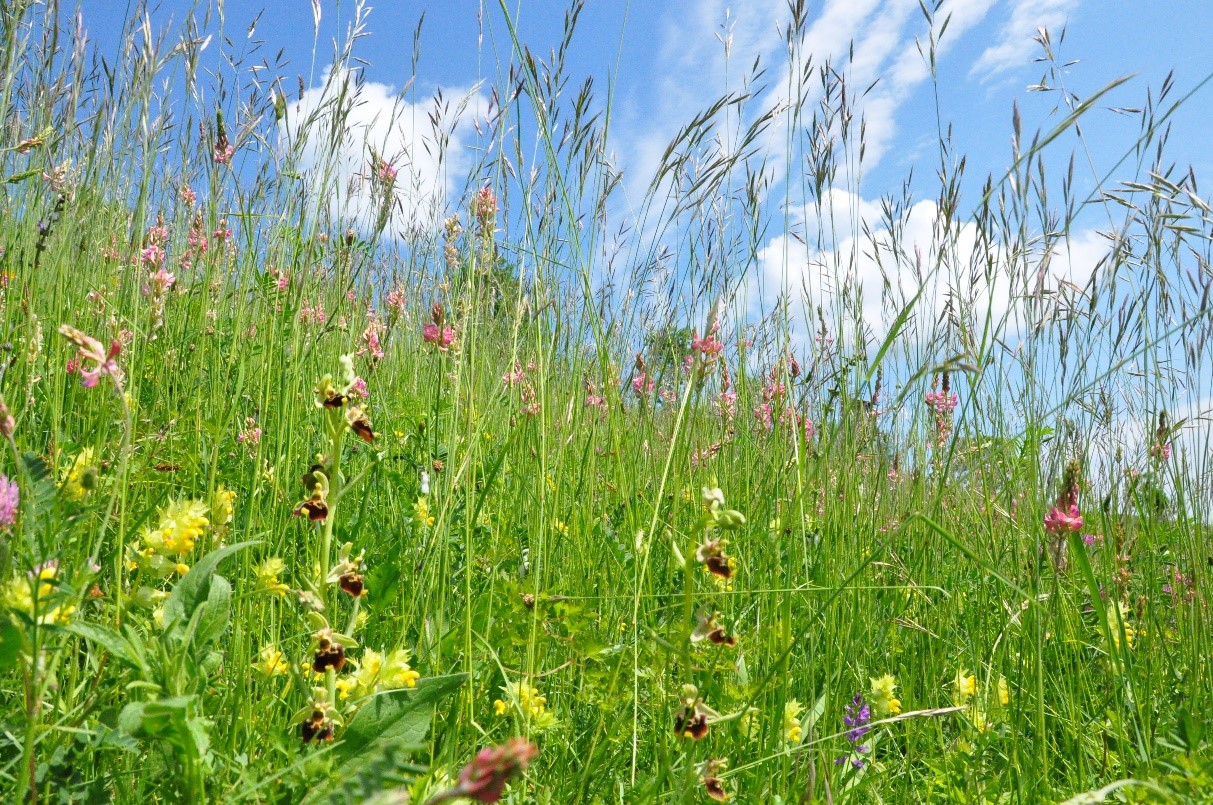16.01.2024: Sonja ŠKORNIK and Nataša PIPENBAHER (University of Maribor, Slovenia): Species-Rich Grasslands in Slovenia: Floristic/Functional Composition and Conservation, HS 31.11, Institut für Biologie, Bereich Pflanzenwissenschaften, Schubertstraße 51, 17.00 bis 18.30 Uhr
Slovenia has a very interesting position at the intersection of four biogeographical regions: the Mediterranean, the Pannonian Plain, the Alps and the Dinaric Karst. It is characterised by great natural diversity and has the highest proportion of Natura 2000 sites in the EU (approx. 37%). While 60% of the Slovenian territory is forested, the non-forested areas are mostly a well-preserved example of a typical traditional Central European agricultural landscape with a mosaic of settlements, fields, grasslands, orchards, vineyards and hedgerows. More than half of the total utilised agricultural area is occupied by permanent grassland, including a large number of species-rich grassland communities, which represent a strongly declining vegetation in Slovenia and in Europe. They have become one of the most threatened habitats in Europe and most of them are listed in Annex I of the Habitats Directive.
Experts in grassland ecology (botanists and vegetation ecologists) at the University of Maribor have conducted a number of studies on species rich grasslands throughout Slovenia over the past 20 years. They focus on botanical and functional composition, ecology, agricultural land use and their importance for biodiversity conservation in Slovenia and Europe. They are also involved in numerous national and EU projects dealing with grassland plant species and vegetation studies, conservation objectives and measures for habitats and Natura 2000 sites. They are currently focusing on the development of methods and indicators for monitoring the achievement of conservation objectives in species-rich grassland as part of a new system of agri-environmental payments in Slovenia with targeted (result-based) grassland conservation schemes.
